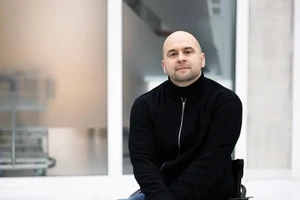This system is designed to interface with Poland’s PIONIER-Q backbone and, eventually, with Latvia through the proposed Lat-LitQN corridor—forming a quantum-secure Baltic route.
Professor Grigaliūnas also warned that rapid advances in artificial intelligence—including real-time voice cloning and deep traffic analysis—are raising the stakes for cryptographic identity and authenticity.
“QKD gives us tamper-proof entropy,” he said, “but security may still be compromised if keys are not distributed or refreshed quickly enough. We must pair quantum keys with post-quantum cryptography (PQC) and adopt ETSI/CENELEC standards to ensure interoperability across Lithuania, Poland, and Latvia.”
The presentation also spotlighted the upcoming Eagle-1 satellite mission, set to launch this winter. Eagle-1 will serve as a low-Earth orbit demonstrator for space-to-ground QKD, with the Lithuanian and Polish ground stations playing a central role in building a fault-resilient quantum link across the Baltic region.
Representatives from Toshiba Europe joined the session to share commercial insights, drawing from their experience with the BT–Toshiba Quantum-Secure Metro Network. They showcased results from QKD-protected blockchain testing and voiced support for Professor Grigaliūnas’s call for proactive “collect now, decrypt later” mitigation strategies. Toshiba also demonstrated device-level quantum integration models that could be tailored to Baltic research and government networks.
“We gained valuable insights on the compelling drivers and operational requirements for quantum secure networking across Lithuania and neighbouring countries,” commented Dr Andrew Shields, Vice President of Toshiba Europe, “we will be pleased to work with Professor Grigaliūnas and his colleagues to implement their objectives for EuroQCI and beyond.”
The session concluded with a focused roundtable on expanding QKD services across the LITNET backbone. University researchers and telecommunications engineers agreed to establish an interoperability testbed in Vilnius this Autumn to evaluate multi-vendor equipment and develop service-level agreements. These SLAs are targeted at government, energy, and financial sector clients, aiming to ensure operational readiness by December 31, 2026, when the EU’s initial quantum security compliance deadline takes effect.



